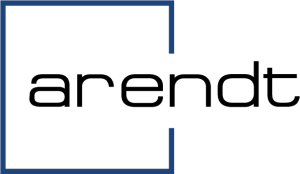MiCA Approved: The EU Parliament Clears the Path for the New Regulation on Crypto-Assets Markets

The first EU-wide comprehensive regulation on crypto-assets will soon be a reality. The EU regulation on markets in crypto-assets (“MiCA”), a key component of the EU Commission’s Digital Finance Package, was adopted by the EU Parliament on 20 April 2023, and has been endorsed by the Council of the EU on 16 May 2023.
Although the both the Luxembourg legislator and regulator have recently worked together to give a response to the fast-paced developments in the markets in crypto-assets (for example, by creating registration requirements for virtual assets service providers, or by providing guidance on virtual assets for credit institutions and investment funds), MiCA is expected to constitute a paradigm shift in the rules that are currently applicable to the crypto-assets markets.
Such a change will be beneficial to service providers because it will create a clear legal framework while ensuring a fair playing field for all market players. Additionally, it will benefit service users by introducing various protective measures, making it a significant and well-received piece of legislation.
The categories of crypto-assets and services falling within the scope of MiCA
MiCA will apply to a broad set of crypto-assets and services on these crypto-assets. In this regard, MiCA will of course apply to the most well-known cryptocurrencies such as Bitcoin, as well as to less known assets such as utility tokens (i.e., crypto-assets intended to give access to goods or services), and certain crypto-assets which purport to retain a stable value, such as e-money tokens and asset referenced tokens (ARTs).
The services on the abovementioned crypto-assets that will be regulated under MiCA will include (i) the custody and administration of crypto-assets, (ii), the operation of a trading platform for crypto-assets, (iii) the reception and transmission of orders for crypto-assets on behalf of clients, as well as (iv) advice and (v) portfolio management of these crypto-assets, amongst others.
It is important to note that it will be possible for existing types of licensed entities (such as banks, investment firms and e-money institutions) to provide the above services. To that end, they will only need to complete a notification procedure with the CSSF. The notification needs to contain a comprehensive set of information and documents and must be submitted at least forty working days in advance of the offer being launched.
Newly created entities (the CASPs) will need to follow a fully-fledged licensing procedure and will be subject to specific prudential and organisational requirements.
“Both existing types of licensed entities and CASPs will be subject to a comprehensive set of rules of conduct specifically designed to protect clients’ assets when custody services are provided, and which are to certain extent similar to those of the regulatory framework of MiFID II.”
A new set of rules of conduct of services providers in crypto-assets
Both existing types of licensed entities and CASPs will be subject to a comprehensive set of rules of conduct specifically designed to protect clients’ assets when custody services are provided, and which are to certain extent similar to those of the regulatory framework of MiFID II. These obligations include, amongst others, the requirement for services providers to keep a register of positions in the name of each client, to adopt a custody policy (including rules and procedures to ensure safekeeping and minimise risks of loss due to fraud, cyber-threats, and negligence), to facilitate the exercise of clients’ rights, as well as to segregate clients’ assets from own assets.
In addition, MiCA requires that crypto-assets held in custody are insulated from the estate of the service provider, with no recourse from creditors of the service provider including in the case of its own insolvency. These last requirements, when considered together with the last corporate scandals in the crypto-assets that we have seen in the news (for example, concerning the collapse of FTX), demonstrate how important the new regulatory framework will be for the market.

A set of provisions regarding the issuance of crypto-assets
The services providers in crypto-assets wishing to issue crypto-assets will be required to issue a white paper describing the features and risks of the relevant crypto-assets, similarly as to what already exists with regard to the prospectus regime for the issuance of financial instruments.
It is worth noting that depending on the type of issuance (including when the crypto-asset is issued for free, or to less than 150 persons) or the type of crypto-asset (including utility tokens), these requirements may be fully or partially disapplied.
Also, considering the risks stemming from ARTs and e-money tokens, MiCA imposes additional requirements, including on authorisation, governance, reserve assets and detailed conduct of business rules, including redemption requirements). ARTs may only be used by authorised issuers of ARTs or by credit institutions.
In addition, some of the requirements may be partially disapplied if the issue is only offered to qualified investors, who must satisfy the conditions for professionals per se under MiFID II, or if the issued assets are below a certain threshold.
As to the e-money-tokens, these are subject to very specific rules under MiCA such as, for example, regarding the contents of the white paper and valorisation. Also, e-money tokens may only be issued by credit institutions or by e-money institutions.
Timeline and next steps
The regulation is expected to be published in the EU Official Journal in June and enter into force in July 2023.
MiCA is intended to apply as from 18 months after its entry into force, which will take place on the twentieth day following its publication in the EU Official Journal. Certain provisions will, however, apply earlier, such as the requirements for ARTs and e-money tokens, which will apply 12 months after entry into force.
As the date of application is approaching, it is important to:
- Prepare to obtain the required licences or make the necessary notifications;
- Start drafting white papers, policies and procedures; and
- Revise contracts and arrangements with external providers.
Do not hesitate to contact us and be ready for the entering into application of MiCA!
Authors



